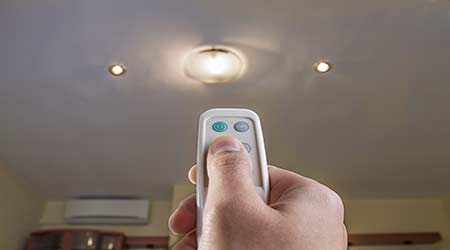Knowing the Types of Lighting Control Systems and How Often Recommissioning Is Needed
Part 2 of a 3-part article on evaluating and improving lighting control systems
The prospect of recommissioning lighting control systems also raises issues of the various types of controls that are available, how often a system should be recommissioned, and what the expected energy savings will be.
Steve Mesh, lighting designer and principal of Lighting Education & Design, notes that there are four broad categories of lighting controls, including fixture-integrated controls and room-based controls, each different from the others and requiring enough understanding and knowledge to use them as efficiently as possible.
Fixture-integrated controls, for example, are supplied with integral sensors, usually occupancy or photo sensors. In some cases, these controls are auto commissioned, where they essentially arrive for installation already commissioned, Mesh says. An occupancy sensor, for example, could by factory default wait for 30 minutes after someone leaves a room to turn off a light.
But 30 minutes, Mesh notes, is a long delay (and is the maximum amount of time delay allowed in California). If the sensor is never adjusted based on the way the space is being used, it defeats the purpose of having the sensors.
"So that’s a good opportunity for recommissioning," Mesh says. "It’s simple. Someone just needs to get to a sensor and fix it."
The question of how often a lighting control system should be recommissioned lacks an easy answer. One sign is that a building is using more energy than it had been previously, says Melanie Taylor, vice president of lighting design for WSP | Parsons Brinckerhoff. If the system is an older one, that might be reason enough to evaluate it.
With a new system, it’s important that the system is in place long enough for the facility staff to do a realistic, thorough assessment of how well the system is performing before a decision about recommissioning is made, Fagnant says.
Mesh says an annual recommissioning is a good time frame, noting that software and hardware change enough over time that it’s worth the time and effort to evaluate lighting controls.
An ideal strategy is for facility managers to commission the lighting control system upon installation and then properly maintain it, including recalibration, reprogramming, and other adjustments on an ongoing basis as building conditions change, DiLouie says.
"Beyond that, the owner should periodically reevaluate the existing control system for upgrade opportunities as technology develops," he says. "For example, if the building is older and currently serviced only with time-clock-based auto shutoff control for entire floors, the building operator should consider a lighting control upgrade to maximize energy savings and value just as they would with new energy-efficient fluorescent lamps and ballasts and LED products."
Energy savings from a recommissioning can be "substantial," DiLouie says, but the amount will vary by application. He points to two significant studies that he says demonstrate the range of potential savings. One study of building projects, conducted by the Lawrence Berkeley National Laboratory and published in 2009, found that commissioning building systems in existing buildings generated a median of 16 percent energy savings, resulting in cost savings of 29 cents per square foot and a typical payback of 1.1 years. An isolated measure, specifically addressing lighting deficiencies via commissioning, was found to generate a 1.4-year payback.
A study in 2012, conducted by the Energy Center of Wisconsin, evaluated the energy savings impact of recommissioning or retrocommissioning existing daylight-harvesting lighting controls in 20 office and public assembly spaces. The study measured energy consumption with lighting controls as they existed, and again after the system was recommissioned. Researchers found that daylight harvesting systems on average generated 20 percent energy savings. After controls were optimized and recommissioned, the final result was 43 percent energy savings, including HVAC impacts.
Desiree Hanford is a freelance writer who spent 10 years as a reporter for Dow Jones. She is a former assistant editor of Building Operating Management.
Related Topics:














